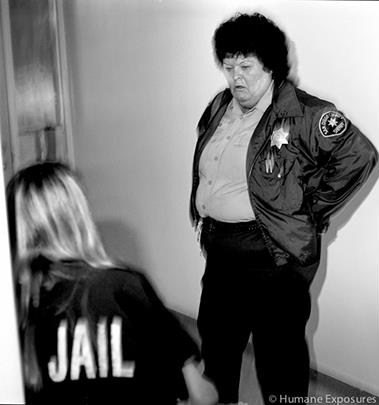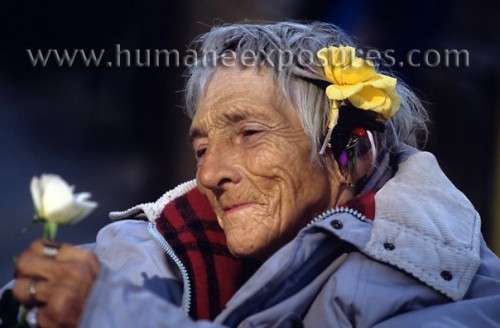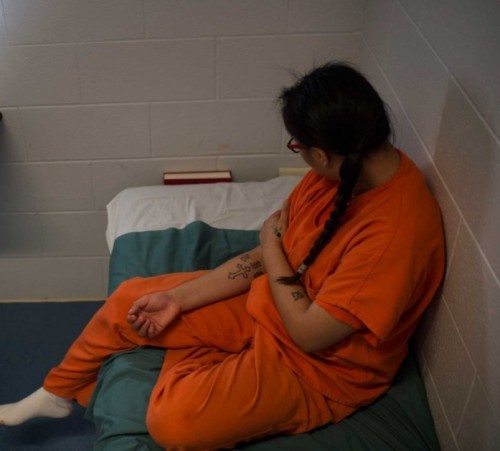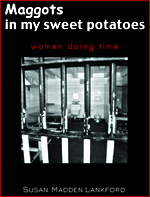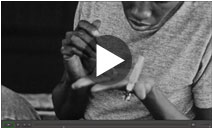The major issues that women face after release from prison are: Re-establishing a home and family life, including regaining legal and physical custody of children; finding affordable housing and meeting other basic needs; securing employment that pays a sufficient income; creating a new social network that may or may not include intimate relationships; fulfilling the multiple conditions of a parole plan, including continued sobriety, if not recovery, from alcohol or drug addiction; and negotiating the stigmatized perception of women ex-prisoners by the general public-potential employers, landlords, and community members.
Across the U.S., an estimated 1.5 million children have a parent held in a state or federal prison, an increase of more than half a million since 1991. Many of these children grow up in foster care, with grandparents or other relatives, or bouncing among an array of temporary caretakers. Women in prison have few opportunities for parenting from the inside and they worry about the impact of their separation on their children.
One prisoner said of her 15-year-old son:
My son is me. I see me all over him and I got to stop it right now. I got to do something, you know, whereas nobody did nothing for me. They did what they thought they can do, but, they were in their own sicknesses and their own problems so they couldn’t really help me and I didn’t really want their help, either. You know, I was 15; you can’t tell me nothing. I know everything, you know. But I’m trying to put my mind back to how I thought then where my son is at now, so I can deal with that. Oh, God, I don’t want my kids to go through this.
Children of African American families are hit particularly hard. Nearly half the parents behind bars are Black; another 20 percent are Hispanic. Unlike locked-up fathers, about two-thirds of women in prison lived with their children prior to incarceration and are more likely to resume custody of them after release. As these mothers struggle to make a fresh start, they will encounter a myriad of legal barriers that may make it extraordinarily difficult for them to succeed in caring for their children. The Temporary Assistance to Needy Families welfare reform legislation of 1996 (TANF) and the Adoption and Safe Families Act of 1997 (ASFA) often present oppressive roadblocks to women leaving prison.
The TANF legislation, a complete overhaul of our social welfare system, was intended to reduce welfare dependence through work, but unintended effects of the legislation have produced an increased proportion of people of color remaining on welfare who are unable to get or keep adequate employment. In addition, the policies do not address the lack of adequate financial support for poor relatives caring for children whose parents are incarcerated, and stipulates against financial support for poor parents with drug felony convictions who are the primary care takers for their children upon release from prison.
As a consequence of the federal and state “war on drugs” and the increasing number of convictions and “mandatory minimum” sentences that include prison time for women (who often possess even small amounts of controlled substances), drug convictions have become the largest single factor accounting for the rapid increase of women in prison. A provision in the TANF legislation stipulates that persons convicted of a state or federal offense involving the use or sale of drugs are subject to a lifetime ban on receiving cash assistance and food stamps. Each state has the option for whether or not the ban is enforced. Generally, the woman’s children may still be eligible for limited cash assistance and the ban does not extend to food stamps.
It is estimated that as many as 92,000 women in the states that enforce the welfare ban in full or in part will be affected by it, and a majority of the women affected are African American. The lifetime ban on welfare assistance, especially for women who have children to support, will have a serious effect on women’s ability to overcome addiction, to raise their children, find work, and access drug treatment services. Welfare assistance is a pivotal transitional mechanism for poor and low-income families who face economic insecurity in the weeks and months after release from prison. Losing access to public benefits is likely to make it harder for mothers with criminal records to stay clean and sober, avoid abusive relationships, regain custody and take care of their children, seek and retain employment, and resist engaging in criminal activity.
The second major policy affecting former women prisoners is the Adoption and Safe Families Act of 1997 (ASFA). This Act had as its goal the reduction of children in foster care, increased permanent placement with relatives, increased adoptions and the increased number of children safely reunited with biological parents. The negative unintended effects of this law include: the increased terminations of parental rights; a limited increase in adoptive homes (especially for older children and those disabilities); increases in both formal and informal kinship care – often without the necessary financial support for these kinship arrangements; and a lack of adequate time to achieve reunification with incarcerated parents and parents needing substance abuse treatment. Due to ASFA’s expedited timeline for termination of parental rights, any parent who goes to prison, even for a short time, faces the risk of losing her children forever. To protect their rights, incarcerated mothers must work consistently, and against difficult barriers, both while in prison and afterwards.
Next, safe, decent and affordable housing is critical to the well-being of women with and without custody of their children after they are released from prison. The Chicago Coalition for the Homeless in their “snapshot” survey of women detained at Cook County Detention Center, one of the nation’s largest, found that 54% reported being homeless (defined as residing in an emergency or transitional shelter, doubled up with family and/or friends, staying outside, or in cars) in the 30 days prior to entering the jail. The study also reported that those women without housing are likely to be detained more than six times. Of those women who were unemployed, 23% indicated they were not employed because they had no place to live.
The need for “a safe place to be,” which most of us define as home, is paramount for getting and keeping a job, kicking a drug habit, escaping an abusive relationship and moving back into the community.
Disinvestment in communities and deterioration of housing stock has led to the displacement of lower income households in urban centers, the destination of most women leaving prison. Also, the federal government’s “One Strike Initiative” allows public housing authorities to evict or refuse housing to applicants based on their personal use of an illicit substance or a felony drug conviction. The law holds particular risks for low-income women of color who are most often the head of household in public and subsidized housing. Not only can a tenant be evicted due to her own drug use, but she can also be booted out because a visitor possesses or uses drugs without her knowledge. States vary in the length of time the ban is in effect; in Illinois, the bar on admission to public housing is five years for all felony convictions. This effectively precludes many released women who served a sentence for a drug offense from reapplying for public housing.
Residential halfway houses for ex-inmates in the transition back to community from prison have been proven to be effective in facilitating participants’ reentry. Family is not the only or the best housing option for some women, particularly those with an addiction.
An evaluation of a metropolitan residential center for ex-incarcerated women found that over the first five years of operation, only 20% of former residents returned to prison after departure as compared to the state recidivism rate of 43.7%. Women living at this facility were uniform in their recognition of the importance of having a safe place for working through some of the emotional issues related to incarceration or past struggles, as well as receiving the information and resources for taking steps in rebuilding their lives.
Women’s focus on relationships with others is a major source of self-worth and empowerment that defines their perceptions of the world and their role or place within it. But relationships can also inhibit personal growth and be physically and emotionally debilitating. The rate of abuse they incarcerated women have experienced either within their families or by intimate partners is quite high (estimates vary from 44% to 80%), much higher than the incidence in reported by women in the general population. In addition to the multiple physical problems women experience as a result of violence, the psychological effects have been identified as low self-esteem, clinical levels of depression, lack of assertiveness, feelings of powerlessness, strong fear reactions to threatening situations, and vulnerability to medical illness. There is also some evidence that women’s involvement in drug use and sales, as well as other criminal activity may be an extension of their relationship with their intimate partner.
And gender inequality, economic marginalization, criminal justice practices, racism, and violence against women intersect to “entrap” women of color and send so many to our nation’s prisons with little access to the counseling and services they need to change their lives. Reconstructing relationships can be a source of healing, connection, and support that women exiting prison need.
Finally, incarceration results in women being separated from their children, their communities and other sources of regeneration and positive support. Women’s contacts with people “outside the walls” can help them stay connected to goals and opportunities beyond their prison sentence. For example, a woman in a prison facility in Kansas got involved first as a participant, later as a co-leader in an educational group that was sponsored by a battered women’s shelter. When she came out of prison, she got her first job at the shelter that then provided her with enough stability to later able to buy a house.
Depending on the length of the incarceration, many women when first exiting from prison will say that they believe they have a tattoo on their forehead that proclaims them as “ex-con.” A former prisoner not only has to construct a new self, based on the personal desire to create a non-criminal life, but she also has to deal in some way with others’ expectations. Such expectations are often derived from ignorance, outdated notions, or judgmental preconceptions. Stigma feeds into the forces of isolation and denial that push women deeper into a self-hating process and farther away from the hope of rehabilitation and reintegration. Advocates need to explore how to help women manage the societal stigma related to being a felon that is both real and perceived. An important aspect of managing stigma is making choices for when and how a woman discloses her ex-inmate status.
Groups can be one method for women to discuss how they can deal with questions about having been in prison. The “everyone in the same boat” phenomenon can provide a mutually supportive context for women to effectively address some of the issues they will have to face once they are released.
Comprehensive drug treatment of at least 90 days, when linked to aftercare, has been demonstrated as effective in the successful reintegration of ex-offenders into their communities. Nationally, it is estimated that only 25% of state and federal prisoners participate in either drug treatment or other drug abuse programs.
Women who are unable to find housing may find that residential drug treatment programs provide a viable temporary alternative for them. But a shortage of treatment slots coupled with increasing demand in the community may mean that women exiting prison will not have access to these facilities. In addition, the unavailability of residential care for children to accompany their mothers to the facility while the woman is engaged in treatment, means that women may be forced to choose between regaining custody (after they’ve been separated from their children while incarcerated) and treatment.
Of the multiple hurdles facing women finding employment, the reality of the stigma and bias that women who have a criminal record face is one of the most serious. Many employers are hesitant to hire applicants with conviction histories. When a woman’s criminal history is coupled with previous substance use, the perceived liability increases exponentially. This third rung of jeopardy (along with racism and sexism) increases the difficulties and frustrations of women who want to become self-sufficient and contributing members of their communities.
There are several strategies for creating alternatives to incarceration for non-violent and drug-affected women, and specific policies that should be modified or nullified in order to give women exiting prison an opportunity to reconstruct their lives. We must advocate for changes in the following laws and policies to assist women in maintaining their ties to their children while incarcerated and provide the legal and economic support that will enable them to regain custody of their children, as they have the basic supports to do so, after their release from prison.
- Repeal federal lifetime welfare bans under TANF. Short of federal repeal, there is room to push individual states to opt out of the ban or modify it (as Illinois has done linking this consequence to sales rather than a possession conviction)
- Consider not only drug treatment programs that could allow women to maintain eligibility for TANF, but also alternative programs such as job training or GED programs following an in-depth assessment of their individual needs that could help with addressing the reasons they became involved with drugs.
- Develop strategies aimed at informing women who are denied cash assistance and food stamps of the other benefits and services for which they are eligible, particularly Medicare, job training and employment programs.
- Encourage use of TANF funding flexibility to target resources to assist ex-inmate women to secure job training and education on the state level.
- Encourage and support formalized kinship care placements with family members with subsidy equitable to that of non-family foster care without restrictions on the time in care so that women can maintain their relationships with their children if not legal custody.
- Require that child welfare authorities remain in touch with incarcerated parents so that they have every opportunity to attend hearings on the status of their children in state care.
- Facilitate visitation between children and incarcerated mothers whenever possible.
- Make appropriate reunification services available to incarcerated mothers beginning prior to release.
- Explore alternatives to incarceration for nonviolent and drug-related offenses that could make child welfare intervention and child removal unnecessary.
The following recommendations address some of the structural issues that prevent women from having access to housing, the foundation of successful reentry.
- Congress should consider increasing the stock of subsidized housing so that mothers reentering the community after their incarceration can have access to subsidized housing for their families to begin rebuilding their lives.
- Public Housing Authorities should have the flexibility to begin evaluating evictions and admissions on a case-to-case basis, to look at mitigating circumstances, rehabilitation efforts, and to fully weigh the consequences of a loss of subsidized housing for a family.
- For families with children, Public Housing Authorities could use the “best interest of the child” standard when determining whether to grant admission to a felon or evict families based on drug activity.
- Create a comprehensive housing plan with women while they are incarcerated to help them secure housing upon release by augmenting existing resources for transitional, residential housing and investing in the development of affordable housing for formerly detained women.
- Divert funds from prison construction and maintenance to building long-term shelters for women in transition from prison.
Affirming and mutually supportive relationships can reinforce women’s efforts as they engage in the process of rebuilding their lives.
- Correctional facilities could assist women prisoners in maintaining contacts with positive people in their support system and to help them identify and develop free world contacts.
- Correctional facilities could widen the scope of rehabilitation services available to address women’s multiple and complex needs related to distress and trauma in past relationships.
- Programs for women within prison could assist women to draw upon each other’s strengths as they manage the incarceration and engage in post-release planning.
- Association with other parolees after release should be considered on a case by case basis, as a potential source of support rather than a violation.
Actual and perceived stigma toward ex-inmates can have a debilitating effect on women’s efforts to “keep trying” to meet society’s expectations.
- Pre-release classes could provide women avenues for articulating their fears and discuss the venues where women will be expected to disclose their ex-inmate status (e.g. job interviews, housing applications, etc.).
- Reentry programs could make use of women’s ability to be mutually supportive in assisting each other to address some of the issues for managing stigma.
- Public education efforts could include social marketing and media strategies to put a human face on rehabilitation programs and women who are successful in their reentry.
Substance abuse is a primary issue in women’s involvement in the criminal justice system. Treatment needs to be part of any comprehensive response to women, but women’s entry into treatment is further complicated by the lack of child care, inadequate social support systems, and lack of financial resources.
- Expand the availability of drug treatment both within and outside the criminal justice system that is connected to a continuum of care in the community after release.
- Make welfare and education benefits available for persons convicted of a drug felony so they can build the skills necessary to secure employment with livable wages.
- Create state-financed alternatives to incarceration for women convicted of drug offenses.
One of the indicators for a woman “making it” after release from prison is her ability to secure and keep employment. Parole violations and new crimes are often committed because reentering prisoners lack the skills and supports to adapt to community life. Many are unable to find employment not only because they lack significant work histories and work skills, but also due to the societal stigma related to their criminal and substance use histories. Typically, time spent in prison has weakened family and community ties. Without means of financial support or family and community networks, women released from prison are at high risk of returning to crime to support themselves.
- Ensure that women released from prison have proper documentation so they can apply for transitional benefits and unsubsidized employment.
- Ensure vocational training in and out of prison that is tied to viable labor market opportunities.
- Educate ex-inmates about their rights and potential employers about the illegality and consequences of improperly rejecting job applicants with criminal records. Assist employers to understand how they can address their concerns about “negligent hiring.”
- Educate potential employers and employees about the Federal Bonding Program that offers employers who hire ex-offenders bonding insurance that protects them from theft, larceny, or embezzlement.
- Identify sources of transitional income that will assist women to participate in secondary and post-secondary educational programs to enhance their competitiveness in the job market.
- Link women during their incarceration with job training centers in the communities to which they will be returning.
To improve reentry prospects of women in the transition from prison to home, and to ensure greater public safety, changes are needed that serve to delay or deny women ex-inmates access to vital social benefits, including grants or loans for education, transitional financial assistance, subsidized housing and viable employment. There have been billions of dollars spent for policing, surveillance, and prison construction but little investment in developing restorative structures for justice and accountability. Effectively responding to negative behaviors requires a commitment to social and economic justice as well as safety.


![Leahy2009[1]](http://humaneexposures.com/blog/wp-content/uploads/2015/01/Leahy20091-148x150.jpg)
![Sen_Susan_Collins_official[1]](http://humaneexposures.com/blog/wp-content/uploads/2015/01/Sen_Susan_Collins_official1-150x150.jpg)





